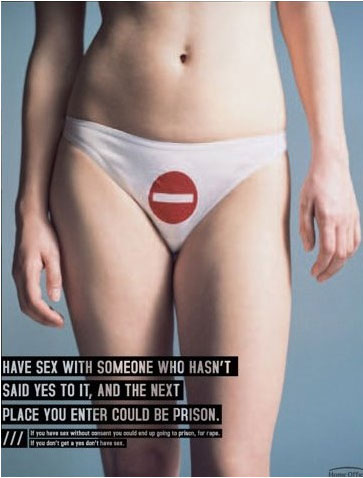Re-posted to add to the discussion about sexual assault in the aftermath of the Steubenville rape trial, the Senate hearing on rape and harassment in the military, and the controversy at Occidental College.
Women’s vulnerability to men’s violence and harassment is a common topic of public service announcements (PSAs) in industrialized countries. More often than not, however, awareness campaigns are aimed at women and tell them how to avoid victimization. We’ve posted already, for example, on campaigns telling girls and women that they are responsible for stopping internet predators, preventing sexual harassment, and instigating domestic violence.
Critics argue that stopping predation, harassment, and violence by men requires telling men not to do those things and telling women to restrict their activities to avoid men who might victimize them is only doubly oppressive. So, when Jeff H. sent in a nice example of a U.K. anti-rape ad targeting men, we thought it was worthy of a post (and see this anti-domestic violence ad for another example).
In a less complimentary mood, Copyranter noted that the poster was hanging in bathrooms and published in men’s magazines and wondered if anti-rape messages should really be communicated with a women’s nearly-naked navel, crotch, and thighs.
Lisa Wade, PhD is an Associate Professor at Tulane University. She is the author of American Hookup, a book about college sexual culture; a textbook about gender; and a forthcoming introductory text: Terrible Magnificent Sociology. You can follow her on Twitter and Instagram.












